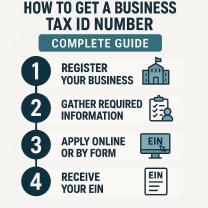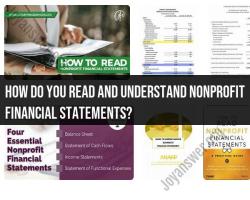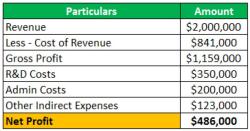Are Equity Indexed annuities securities?
Equity-Indexed Annuities (EIAs) — also called Fixed Indexed Annuities (FIAs) — occupy a somewhat tricky space in U.S. financial regulation, because whether they are considered securities depends on their structure and on how regulators view them.
1. Basic Nature of EIAs
Indexed to a stock market benchmark (like the S&P 500), but you don’t directly own the underlying securities.
Provide a minimum guaranteed return plus potential additional returns based on the index’s performance.
Issued by insurance companies, not broker-dealers.
Typically marketed as a blend of fixed and variable features.
2. Are EIAs “Securities”?
General rule (most cases):
EIAs are not classified as securities under federal law if they meet certain criteria under the Securities Act of 1933.
They are usually regulated as insurance products by state insurance departments, not by the SEC.
Key test:
SEC v. Variable Annuity Life Insurance Co. (VALIC) and later SEC v. United Benefit Life Insurance Co. established that a product is a “security” if the purchaser assumes investment risk.
In 2008, the SEC issued Rule 151A to classify certain indexed annuities as securities — but that rule was challenged and effectively reversed by Dodd-Frank Act §989J (2010).
Current federal position (post-Dodd-Frank):
If an annuity:
Is issued by a state-regulated insurance company,
Offers guaranteed benefits,
Is subject to state insurance regulation,
…then it is not treated as a security.
3. Regulatory Landscape
| Regulator | When Involved | Notes |
|---|---|---|
| State Insurance Departments | Always | Licensing, solvency, disclosure for EIAs. |
| SEC | Rarely | Only if product fails Dodd-Frank exemption or is structured more like an investment contract. |
| FINRA | Only if sold by broker-dealers | Focuses on suitability and marketing compliance when securities reps sell them. |
| NAIC (National Association of Insurance Commissioners) | Model rules adopted by states | Annuity Suitability Model Regulation requires agents to ensure the product is in the client’s best interest. |
4. Special Situations Where an EIA Could Be a Security
No guaranteed minimum return → could be deemed a variable annuity.
Linked to risky, non-traditional indices or exotic options → might be structured enough like an “investment contract” to trigger securities status.
Sold improperly through securities channels without insurance licensing → regulatory violations can occur regardless of classification.
Bottom Line
Most EIAs are not securities under U.S. federal law and are regulated as insurance products.
Exceptions exist for atypical structures or if the product fails the Dodd-Frank exemption criteria.
Even when not securities, EIAs are subject to state insurance rules, NAIC suitability standards, and, if sold by securities reps, FINRA sales-practice oversight.
Here’s a side-by-side comparison so you can clearly see how Equity-Indexed Annuities (EIAs) differ from Variable Annuities (VAs) and Traditional Fixed Annuities (FAs) — especially regarding securities classification and regulation.
Annuity Comparison Table
| Feature | Traditional Fixed Annuity (FA) | Equity-Indexed Annuity (EIA / FIA) | Variable Annuity (VA) |
|---|---|---|---|
| Primary Return Source | Fixed interest rate guaranteed by insurer | Minimum guaranteed interest plus additional interest linked to a stock market index (e.g., S&P 500) | Investment performance of sub-accounts (mutual fund–like options) |
| Market Exposure | None | Partial — linked to index performance (with caps, participation rates, or spreads) | Full — directly tied to underlying investment funds |
| Risk to Owner | Minimal (insurer guarantees payments) | Low to moderate (downside limited by guarantee, upside capped) | High (value fluctuates with market performance) |
| Guarantee | Guaranteed principal and fixed interest | Guaranteed principal plus minimum interest (state minimums) | No guaranteed return; depends on investments |
| Potential Upside | None beyond fixed rate | Some — tied to index gains (subject to caps/participation rates) | Unlimited — fully market-driven |
| Who Issues? | State-regulated insurance companies | State-regulated insurance companies | State-regulated insurance companies, but securities elements make them subject to SEC oversight |
| Regulator (Primary) | State Insurance Department | State Insurance Department | SEC + FINRA + State Insurance Department |
| Securities Classification | Not a security | Not a security (under Dodd-Frank exemption) unless fails criteria | Security |
| Sales Licensing Required | Insurance license | Insurance license (sometimes securities license if sold by a broker-dealer rep) | Both securities license (Series 6/7) and insurance license |
| Suitability Standard | NAIC Model Regulation adopted by states | NAIC Model Regulation adopted by states | FINRA suitability rules + state insurance rules |
| Tax Treatment | Tax-deferred growth | Tax-deferred growth | Tax-deferred growth |
| Liquidity Restrictions | Surrender charges if withdrawn early | Surrender charges if withdrawn early | Surrender charges + market risk losses |
| Typical Buyer Profile | Very conservative | Moderately conservative | Growth-oriented, risk-tolerant |
Key Securities Law Insight for EIAs
Under Dodd-Frank Act §989J, an indexed annuity is exempt from SEC registration if:
It’s issued by a state-regulated insurance company.
It provides a guaranteed minimum value.
It’s subject to state insurance regulation.
If an EIA doesn’t meet these conditions (e.g., no minimum guarantee, high market exposure, or issued by a non-insurance entity), it could be deemed a security under the Howey Test for investment contracts.
Are Equity Indexed annuities classified as securities?
No, most Equity Indexed Annuities (EIAs) are not classified as securities by the Securities and Exchange Commission (SEC). They are generally considered insurance products.
How are Equity Indexed annuities regulated in the financial and securities markets?
The regulation of EIAs is a hybrid system that primarily falls under state insurance regulation, with some federal oversight.
State Regulation: State insurance departments are the primary regulators.
They oversee the licensing of agents, review product forms, and ensure the financial stability of the insurance companies that issue the annuities. They also enforce disclosure requirements and a "best interest" standard for agents selling annuities. Federal Regulation: The SEC and the Financial Industry Regulatory Authority (FINRA) regulate EIAs that are considered securities, typically those with less-robust guarantees or features that make them more akin to investment products. These registered EIAs must provide a prospectus and are subject to federal securities laws.
Are there specific features or characteristics of Equity Indexed annuities that define their classification?
Yes, the classification of an EIA depends on its specific features, which determine if it's an insurance product or a security. A key feature is the minimum guaranteed interest rate, which provides principal protection.
Insurance Product Classification: EIAs that offer a robust minimum guaranteed return on the principal (often 90% of premiums paid, plus a minimum interest rate) are typically considered insurance products. This guarantee is the primary characteristic that differentiates them from variable annuities and other securities.
Security Classification: An EIA may be classified as a security if its payments are highly dependent on a securities index, and the minimum guarantees are not significant enough to differentiate it from a traditional investment. The level of risk assumed by the investor is a key factor in this determination.
What legal and regulatory considerations come into play when dealing with Equity Indexed annuities?
The complex nature of EIAs raises several legal and regulatory considerations:
Suitability and Best Interest Standard: The agent selling the annuity must ensure that the product is suitable for the client's financial situation, investment objectives, and risk tolerance.
Many states have adopted the NAIC's Suitability in Annuity Transactions Model Regulation, which requires agents to act in the "best interest" of the consumer. Misleading Marketing: Regulators are concerned about misleading sales illustrations and marketing materials that may overstate potential returns or understate fees and risks.
Disclosure Requirements: Agents are required to provide clear and comprehensive disclosures about the product's terms, fees, risks, and benefits to the consumer.
State Guarantee Associations: If an issuing insurance company fails, state insurance guaranty associations provide a level of protection, but this coverage is often limited and not guaranteed by the federal government.
How do investors and financial professionals navigate the regulatory landscape related to Equity Indexed annuities?
Both investors and financial professionals must take specific steps to navigate the regulatory environment:
For Investors: It's crucial to carefully read and understand all disclosure documents. Investors should research the financial strength of the issuing insurance company and the professional history of the agent using tools like FINRA's BrokerCheck.
They should ask for a clear explanation of how returns are calculated, including caps, participation rates, and spreads, and be wary of promises of "market upside with no risk." For Financial Professionals: Professionals must hold the appropriate licenses to sell EIAs, which may include both an insurance license and a securities license if the product is registered as a security. They are required to conduct a thorough suitability analysis and document their recommendations.
The key is to be transparent about the product's features, risks, and potential returns, ensuring the client has all the necessary information to make an informed decision.













